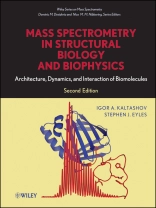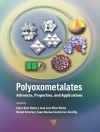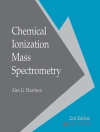The definitive guide to mass spectrometry techniques in biology
and biophysics
The use of mass spectrometry (MS) to study the architecture and
dynamics of proteins is increasingly common within the biophysical
community, and Mass Spectrometry in Structural Biology and
Biophysics: Architecture, Dynamics, and Interaction of
Biomolecules, Second Edition provides readers with detailed,
systematic coverage of the current state of the art.
Offering an unrivalled overview of modern MS-based armamentarium
that can be used to solve the most challenging problems in
biophysics, structural biology, and biopharmaceuticals, the book is
a practical guide to understanding the role of MS techniques in
biophysical research. Designed to meet the needs of both academic
and industrial researchers, it makes mass spectrometry accessible
to professionals in a range of fields, including
biopharmaceuticals.
This new edition has been significantly expanded and updated to
include the most recent experimental methodologies and techniques,
MS applications in biophysics and structural biology, methods for
studying higher order structure and dynamics of proteins, an
examination of other biopolymers and synthetic polymers, such as
nucleic acids and oligosaccharides, and much more.
Featuring high-quality illustrations that illuminate the
concepts described in the text, as well as extensive references
that enable the reader to pursue further study, Mass Spectrometry
in Structural Biology and Biophysics is an indispensable resource
for researchers and graduate students working in biophysics,
structural biology, protein chemistry, and related fields.
Inhoudsopgave
Preface to Second Edition
Preface
1. General Overview of Basic Concepts in Molecular Biophysics
1.1 Covalent Structure of Biopolymers
1.2 Non-Covalent Interactions and Higher Order Structure
1.3 The Protein Folding Problem
1.4 Protein Energy Landscapes and the Folding Problem
1.5 Protein Dynamics and Function
1.6 Protein Higher Order Structure and Dynamics From Biotechnology Perspective
2. Overview of traditional experimental arsenal to study Biomolecular structure and dynamics
2.1 X-ray Crystallography
2.2 Solution Scattering Techniques
2.3 NMR Spectroscopy
2.4 Other Spectroscopic Techniques
2.5 Other Biophysical Methods to Study Macromolecular Interactions and Dynamics
3. Overview of Biological Mass Spectrometry
3.1 Basic Principle of Mass Spectrometry
3.2 Methods of Producing Biomolecular Ions
3.3 Mass Analysis
3.4 Tandem Mass Spectrometry
3.5 Brief Overview of Common Mass Analyzers
4. Mass Spectrometry-Based Approaches to Study Biomolecular Higher-Order Structure
4.1 Direct Methods of Structure Characterization: Native ESI MS
4.2 Chemical Cross-Linking for Characterization of Biomolecular Topography
4.3 Mapping Solvent-Accessible Areas with Chemical Labeling and Foot-printing Methods
4.4 Hydrogen Exchange
5. Mass Spectrometry-Based Approaches to Study Biomolecular Dynamics: Equilibrium Intermediates
5.1 Direct Methods of Monitoring Equilibrium Intermediates: Protein Ion Charge State Distribution in ESI MS
5.2 Chemical Labeling and Trapping Equilibrium States in Unfolding Experiments
5.3 Structure and Dynamics of Intermediate Equilibrium States by Hydrogen Exchange
5.4 Measurements of Local Patterns of Hydrogen Exchange in the Presence of Non-native States
6. Kinetic Studies by Mass Spectrometry
6.1 Kinetics of Protein Folding
6.2 Kinetics by Mass Spectrometry
6.3 Kinetics of protein assembly
6.4 Kinetics of Enzyme Catalysis
7. Protein Interactions: A Closer Look at the ‘Structure-Dynamics-Function’ Triad
7.1 Direct Methods of Monitoring Protein Interactions with Their Physiological Partners in Solution by ESI MS: From Small Ligands to Other Biopolymers
7.2 Assessment of Binding Affinity with Direct ESI MS Approaches
7.3 Indirect Characterization of Non-covalent Interactions Under Physiological and Near-Physiological Conditions
7.4 Indirect Characterization of Non-covalent Interactions Under Partially Denaturing Conditions
7.5 Understanding Protein Action: Mechanistic Insights from the Analysis of Structutre and Dynamics under Native Conditions
7.6 Going Full Circle with Mass Spectrometry: Native ESI MS Reveals Structural Changes Predictied by HDX MS Measurements
7.7 Understanding Protein Actions: Mechanistic Insights from the Analysis of Structure and Dynamics under Non-native (Partially Denaturing) Conditions
8. Other Biopolymers and Synthetic Polymers of Biological Interest
8.1 Nucleic Acids
8.2 Oligosaccharides
8.3 Synthetic Polymers and Their Conjugates with Biomolecules
9. Mass Spectrometry on the Frontiers of Molecular Biophysics and Structureal Biology: Perspectives and Challenges
9.1 Mass Spectrometry and the Unique Challenges of Membrane Proteins
9.2 The Protein Aggregation Problem
9.3 The Many Faces of Complexity: Mass Spectrometry and the Problem of Structural Heterogeneity
9.4 How Large is ‘Too Large’? Mass Spectrometry in Characterization of Ordered Macromolecular Assemblies
9.5 Complexity of Macromolecular Interactions In Vivo and Emerging Mass Spectrometry-Based Methods to Probe Structure and Dynamics of Biomolecules in their Native Environment
Appendix: Physics of Electrospray
Index
Over de auteur
IGOR A. KALTASHOV, PHD, is a Professor in the Department of Chemistry at the University of Massachusetts Amherst.
STEPHEN J. EYLES, PHD, is a Senior Lecturer in the Department of Biochemistry and Molecular Biology, and the Director of the Mass Spectrometry Center at the University of Massachusetts Amherst.












